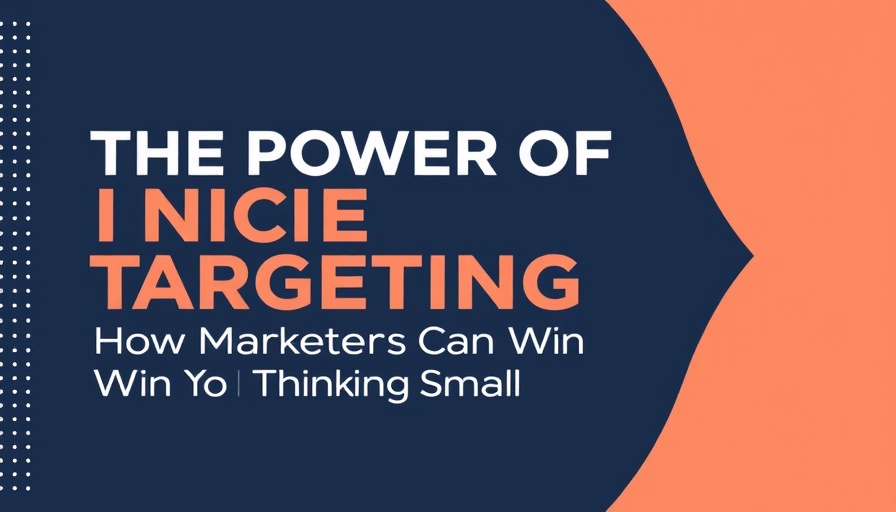
The Transformative Impact of Niche Targeting
In an increasingly crowded marketplace, standing out can feel daunting. However, for brands willing to consider a more focused approach, niche targeting presents a golden opportunity. Rather than attempting to reach a broad audience, savvy marketers are discovering the power of connecting with smaller, highly engaged groups. This shift not only builds deeper relationships but can also deliver significantly higher conversion rates.
Why Niche Audiences Matter Now More Than Ever
Modern consumers are not just looking for products; they crave brands that understand them on a personal level. According to a recent study by Media Volery, a whopping 88% of U.S. adults feel it's crucial for brands to recall past interactions. This strong sentiment highlights a pivotal truth: if your marketing doesn't resonate on a personal level, it risks alienating some of your most loyal potential customers.
So, why should companies trend small when larger markets beckon? The answer lies in a simple observation: niche audiences are exceptionally passionate. Whether they're dedicated dog owners or wellness enthusiasts, these consumers are emotionally invested, making them prime targets for brands that aim for engagement over broad reach. Research from Epsilon underscores this, with 80% of consumers indicating a preference for brands that tailor experiences to their interests.
Micro-Targeting: Going Beyond the Surface
In today's data-driven world, micro-targeting is far more effective than conventional blanket marketing strategies. Instead of casting a wide net, brands can leverage advanced analytics to identify smaller, actionable segments of their audience. Rather than promoting a generic fitness shoe, a company might focus on specific groups like marathon runners or individuals seeking barefoot-style shoes. By honing in on these specific interests, brands can craft personalized messaging that effectively captures attention and drives conversion.
Steps to Successfully Implement Niche Targeting
Effectively utilizing niche targeting requires careful planning and execution. First and foremost, marketers must embrace detailed segmentation. This means delving deeper than simple demographic data and utilizing insights about consumers' purchasing behaviors and preferences.
Once these segments are established, the next step is creating hyper-personalized messaging that speaks directly to the specific needs of each group. A great example is a sportswear brand that features vegan athletes in its advertisements, similar to how Allbirds taps into eco-conscious consumers by showcasing its commitment to sustainability. This targeted approach not only resonates deeply with the audience but also fosters loyalty and trust.
The Road Ahead: Future Potential of Niche Marketing
The possibilities of niche targeting are as vast as creative marketers can imagine. As personalization becomes increasingly anticipated in all sectors, brands will need to adapt by continuously evolving their strategies. This could involve leveraging new technologies, innovative storytelling, or deepening engagement through community-building efforts.
Ultimately, those who embrace niche targeting will likely find themselves not just ahead of the competition, but more importantly, in the hearts of their customers. By focusing on specific interests and values, brands can forge meaningful connections that drive loyalty in a way that traditional marketing strategies simply cannot.
 Add Row
Add Row  Add
Add 




Write A Comment